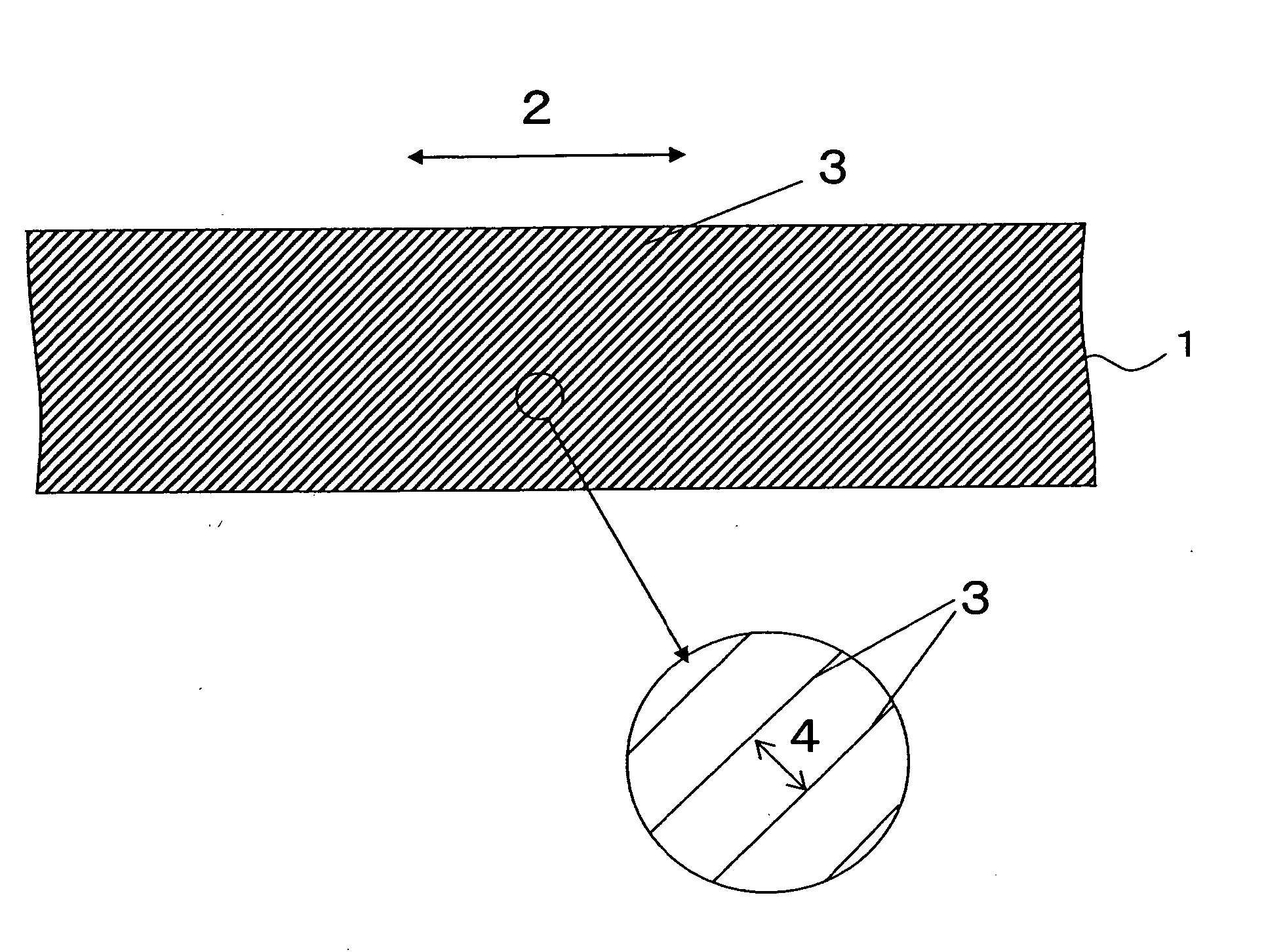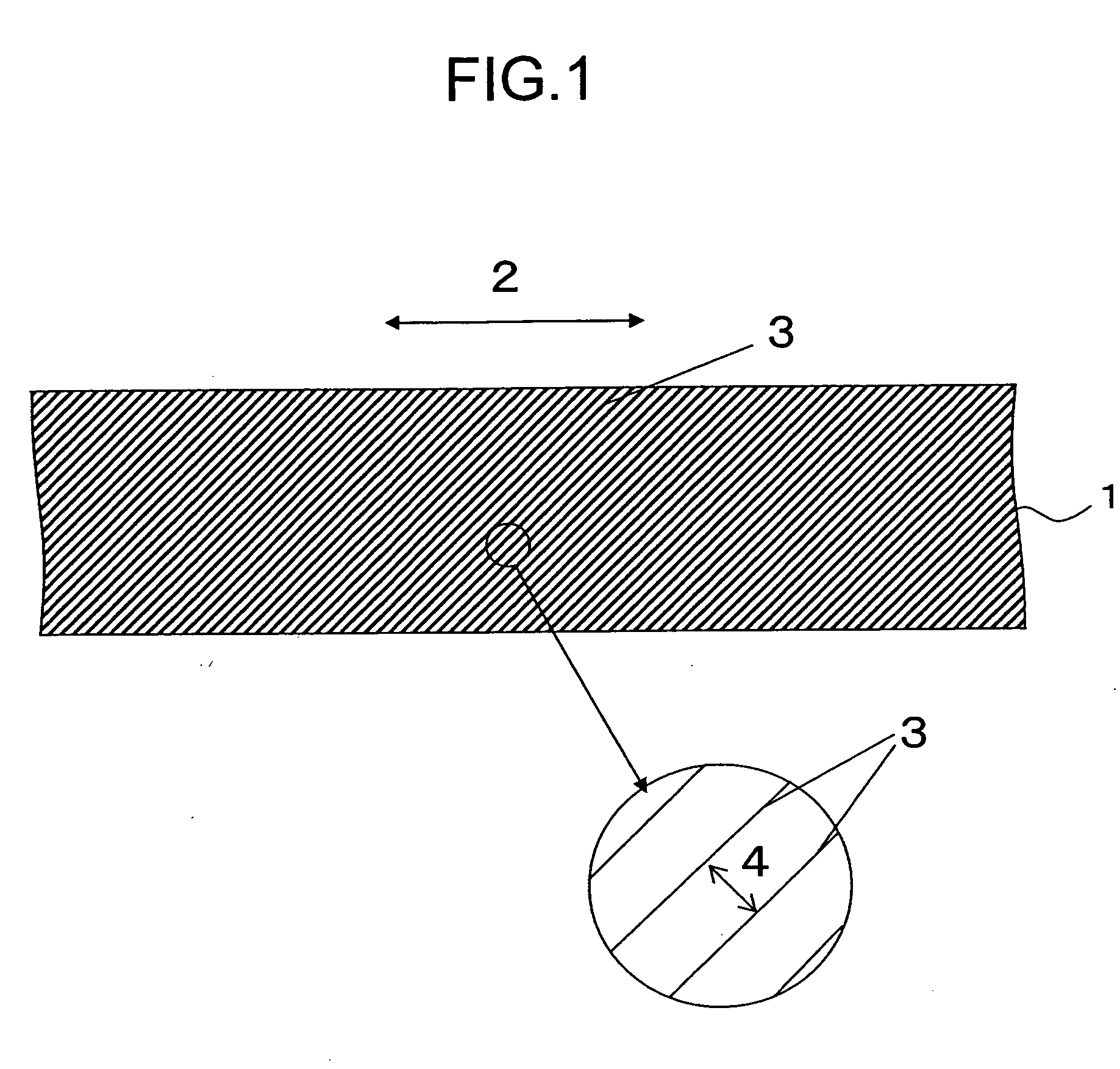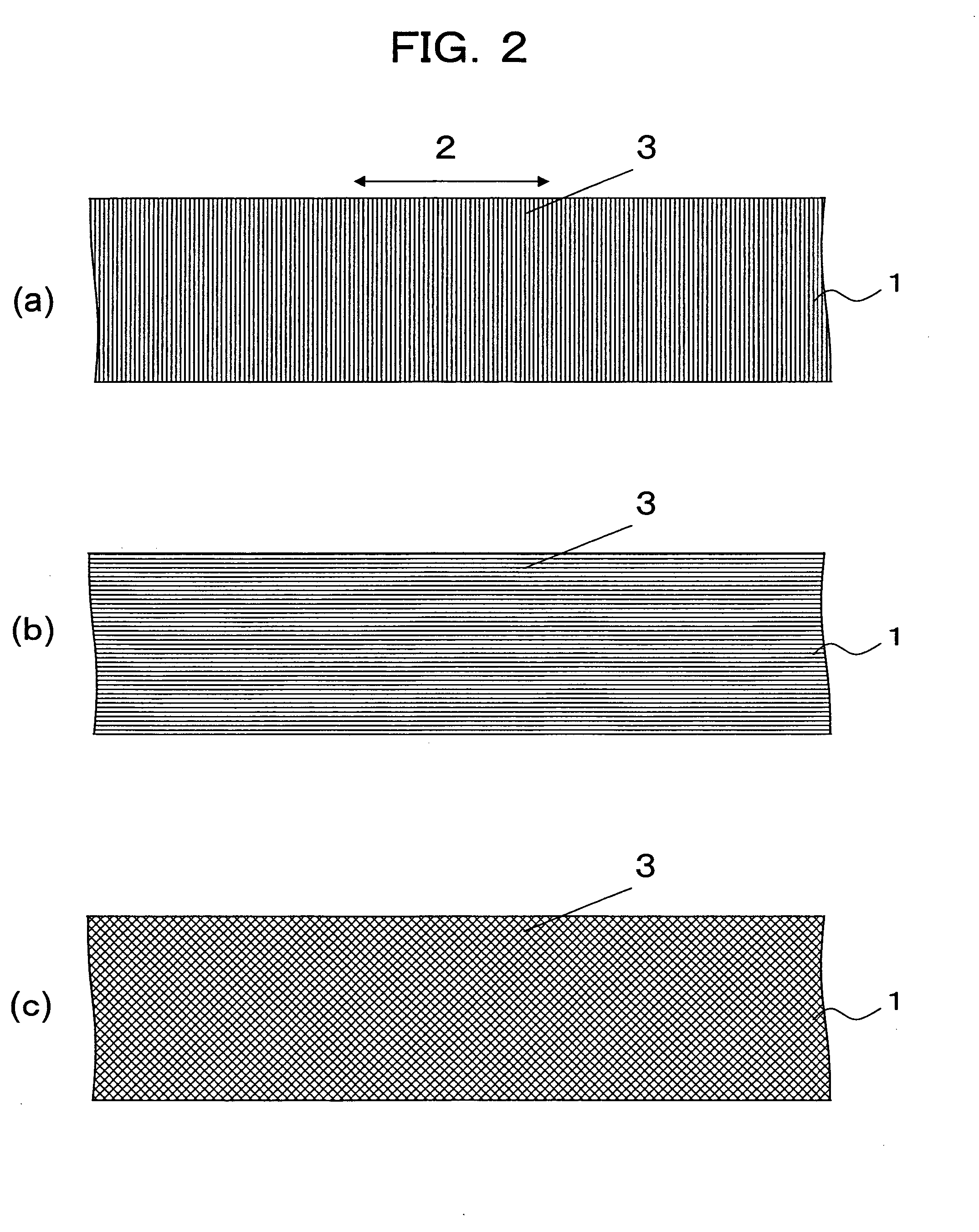Electrode plate for nonaqueous electrolyte secondary battery and nonaqueous electrolyte secondary battery
a technology of electrolyte secondary battery and electrolyte secondary battery, which is applied in the direction of electrochemical generators, cell components, metal working apparatuses, etc., can solve the problems of poor battery performance, unstable quality, electrode rupture, etc., and achieve high voltage, easy infiltration into the active material layer, and increase the surface area
- Summary
- Abstract
- Description
- Claims
- Application Information
AI Technical Summary
Benefits of technology
Problems solved by technology
Method used
Image
Examples
example 1
[0062] A positive active material layer coating composition was prepared by dispersing and mixing 100 parts by weight of LiCoO2 (positive active material), 2.5 parts by weight of acetylene black (electrically conductive agent for positive electrode), 2 parts by weight of polyvinylidene fluoride (binder for positive electrode), and 45 parts by weight of N-methylpyrrolidone (solvent) in a planetary disperser. The positive active material layer coating composition was applied to both sides of a 15 μm thick aluminum foil so as to have a dry coating amount of about 250 g / m2 per one side. Thereafter, the coating was dried and pressed so that a positive electrode plate with a coating film density of 3.7 g / cc was obtained. Slits were then formed in the positive electrode plate through a rotary die unit. The slits were formed with a depth of 10 μm, a width of 10 μm. And a distance between the adjacent slits was 5 mm. The positive electrode plate was cut so as to have a width of 56 mm.
[0063]...
example 2
[0064] The process of Example 1 was performed except that through the rotary die unit, the slits was formed with a depth of 20 μm, a width of 20 μm and a distance between the adjacent slits of 5 mm in the positive electrode for use, after the press.
example 3
[0065] The process of Example 1 was performed except that through the rotary die unit, the slits was formed with a depth of 3 μm, a width of 5 μm and a distance between the adjacent slits of 5 mm in the positive electrode for use, after the press.
PUM
| Property | Measurement | Unit |
|---|---|---|
| width | aaaaa | aaaaa |
| depth | aaaaa | aaaaa |
| distance | aaaaa | aaaaa |
Abstract
Description
Claims
Application Information
 Login to View More
Login to View More - R&D
- Intellectual Property
- Life Sciences
- Materials
- Tech Scout
- Unparalleled Data Quality
- Higher Quality Content
- 60% Fewer Hallucinations
Browse by: Latest US Patents, China's latest patents, Technical Efficacy Thesaurus, Application Domain, Technology Topic, Popular Technical Reports.
© 2025 PatSnap. All rights reserved.Legal|Privacy policy|Modern Slavery Act Transparency Statement|Sitemap|About US| Contact US: help@patsnap.com



